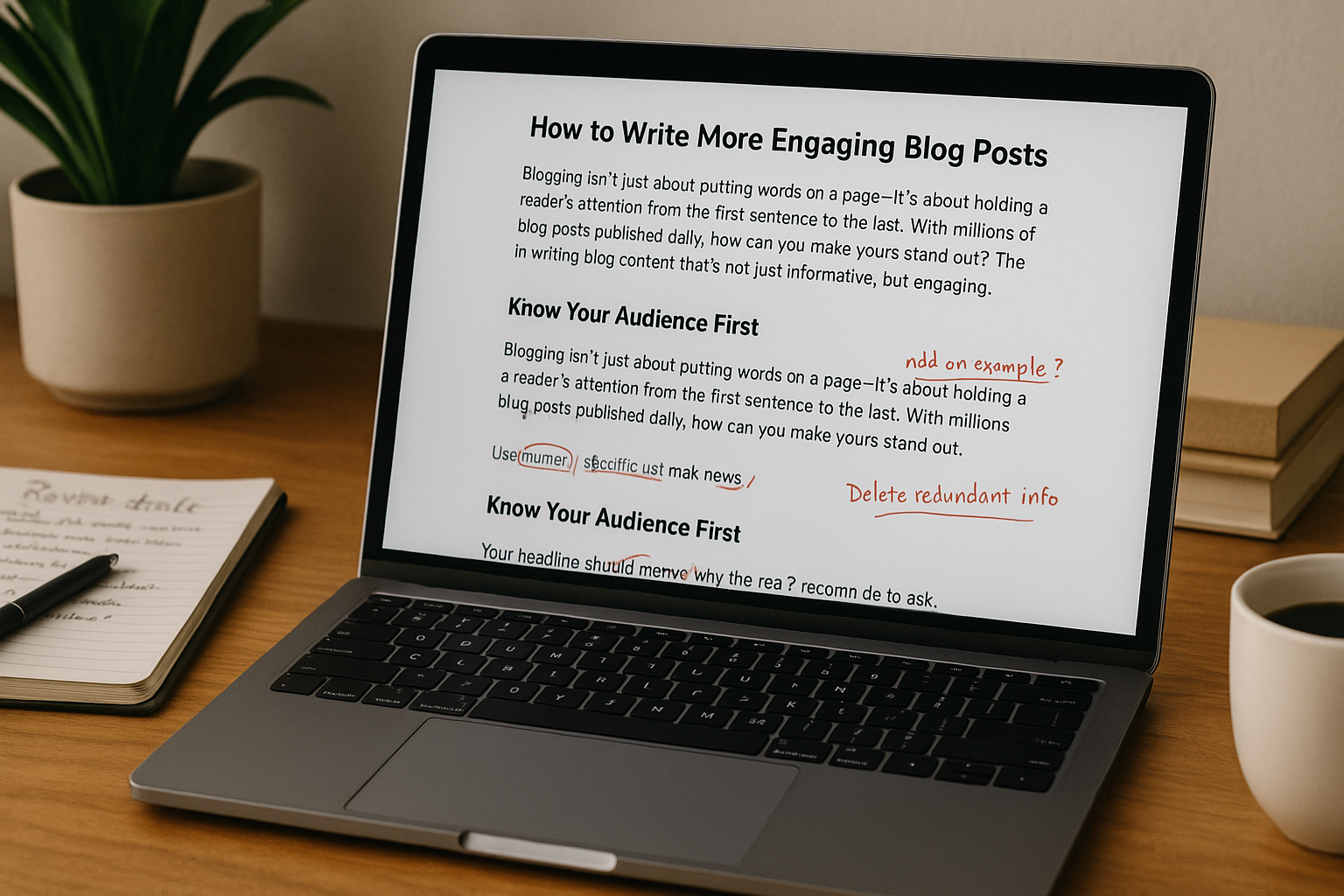Blogging isn’t just about putting words on a page—it’s about holding a reader’s attention from the first sentence to the last. With millions of blog posts published daily, how can you make yours stand out? The answer lies in writing blog content that’s not just informative, but engaging.
In this article, we’ll walk through actionable strategies to help you write blog posts that people actually want to read.
Know Your Audience First
Before you start writing, you need to know who you’re talking to. Are you writing for:
- Aspiring freelance writers?
- Small business owners?
- Marketing professionals?
- Teenagers interested in creative writing?
Understanding your target audience allows you to choose the right tone, examples, and structure.
Tip: Write as if you’re helping one specific person, not “everyone.”
Nail the Headline
Your headline is the gatekeeper of your blog post. If it doesn’t grab attention, no one will click to read more.
Strong headlines:
- Promise value or a solution
- Use numbers or specific outcomes
- Trigger curiosity or emotion
Examples:
- “7 Proven Ways to Make Your Blog Posts More Interesting”
- “The Secret to Writing Content People Actually Read”
- “Why No One Reads Your Blog—and How to Fix It”
Tool tip: Try using headline analyzers like CoSchedule to improve your titles.
Open Strong (Hook Them Early)
Your introduction should pull readers in immediately. Start with:
- A bold statement
- A surprising fact
- A relatable problem
- A powerful question
Then, explain how your article will solve that problem or expand on the idea.
Avoid generic or slow starts like:
❌ “Blogging has become very popular these days…”
Instead, go for:
✅ “Most blog posts are ignored within 15 seconds—here’s how to keep people reading yours.”
Use Subheadings to Organize Your Ideas
People don’t read blog posts word-for-word—they scan them. Subheadings (like the ones in this post) help break your content into chunks and guide readers through the article.
Each section should deliver clear value on its own and flow naturally into the next.
Make it Visually Friendly
Use formatting to make your content skimmable:
- Short paragraphs (2–4 lines max)
- Bullet points and numbered lists
- Bold key ideas
- Images or illustrations (when appropriate)
Big blocks of text scare readers away. Make your post easy on the eyes.
Tell Stories When Possible
Humans are wired for stories. Even a short anecdote or example can bring your content to life.
Compare:
❌ “Editing is important.”
✅ “When I submitted my first blog post, I didn’t edit it. The client never replied. That’s when I learned: editing matters.”
Personal stories or reader scenarios help readers connect with your message emotionally.
Ask Questions to Involve the Reader
Engagement isn’t just about you talking—it’s about inviting the reader in.
Use rhetorical or reflective questions like:
- “Have you ever struggled to finish a blog post?”
- “What would happen if your next article went viral?”
- “Can you imagine writing something that changes someone’s mind?”
This keeps readers mentally involved and encourages interaction.
Deliver Practical Value
Your blog post should leave the reader better off than they were before. That means:
- Providing real tips
- Offering examples
- Linking to useful resources
- Being honest about challenges
Every paragraph should answer: “What’s in it for the reader?”
End with a Clear Takeaway or Call to Action
Don’t just fade out—wrap things up with purpose.
You can:
- Summarize the key takeaways
- Encourage the reader to comment or share
- Suggest a next step (like signing up for your newsletter)
Good endings create impact and keep your blog post memorable.
Final Thoughts: Make Readers Want More
Engaging blog posts aren’t written by accident—they’re planned, crafted, and revised with intention. It takes practice to get it right, but the payoff is real: more readers, more shares, more clients, more impact.
So next time you sit down to write, remember:
- Focus on your audience
- Make it easy to read
- Offer value
- Tell a story
- Invite the reader to think, feel, or act
Master these skills, and you’ll become the kind of writer people come back to again and again.
